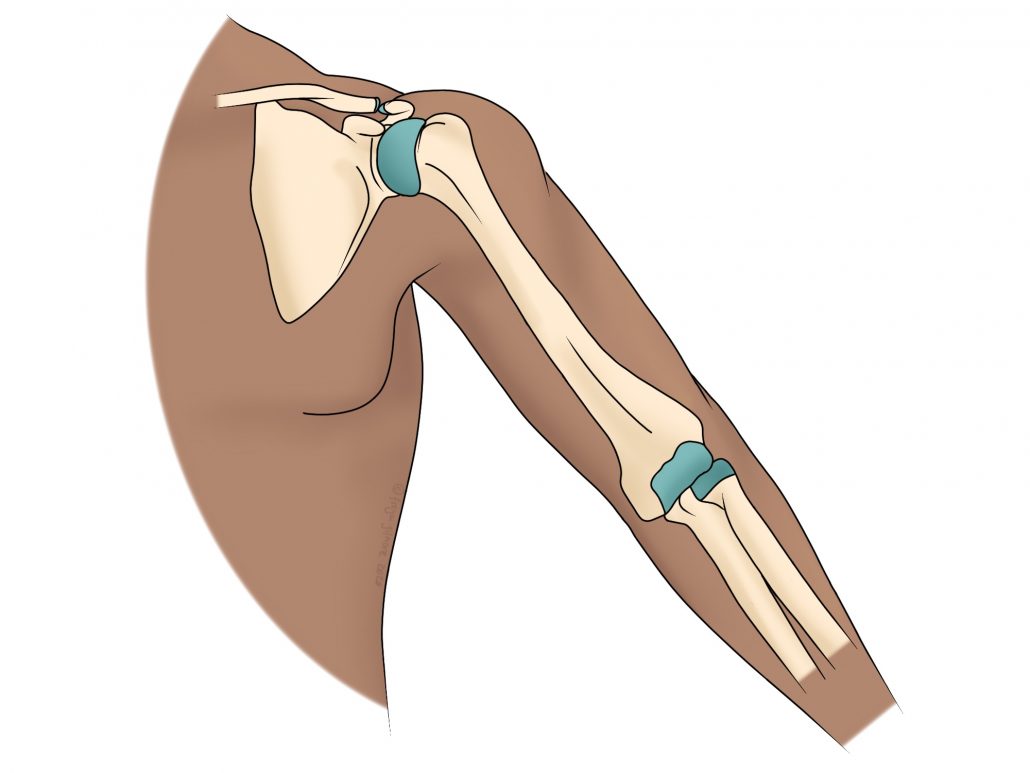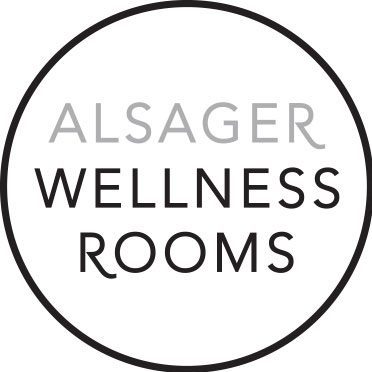Osteopaths treat the body as a whole, and the shoulder and elbow are no exception. Problems with the shoulder, whether in the joint or the whole local area, can cause further problems like headaches. They can also affect the muscles of breathing and vice versa.
Trapped Nerves Around the Shoulder
Nerves that run down the arm and to the hand pass through a small space in the front of the shoulder first. This is the thoracic outlet, and can be a pinch point for nerves and blood vessels. Tight muscles in the front of the chest often play a role, which is a common problem in itself. If your daily life involves a lot of activity with your arms in front, you may develop tight pecs. This can be further exacerbated by weakness in the upper back, which can be a side effect of a hunched posture while your arms work away in front of you.

Pain, pins and needles, numbness, and weakness can result from this compression. The diagram above shows where symptoms are commonly felt. If the cause is muscular, your osteopath can help with treatment and exercises to deal with the symptoms and the root cause. They will also assess whether your symptoms are purely from the nerve or if blood vessels are involved too. The latter needs medical attention.
Irritation of nerves at the shoulder can cause symptoms in the hand, sometimes with no areas affected between the two. This can be mistaken for carpal tunnel syndrome.
The Rotator Cuff: Muscles Around the Shoulder
A common area to develop a soft tissue injury is the rotator cuff. This is a group of four muscles at the back of the shoulder. Severity can be anywhere from a mild strain to a full muscle tear, and this will reflect in some symptoms. Weakness in rotation is a key sign of a rotator cuff injury. There may also be bruising with more severe injuries, or just tenderness for more minor injuries.
Rotator cuff injuries are commonly associated with sports, especially throwing injuries. However, cases can also follow falls, particularly among older patients. Even without direct trauma to the shoulder, the muscles can be affected.

Trauma to the Elbow
Falls, particularly when the elbow is hyper-extended, can cause ligament sprains. They can come with immediate pain and swelling, with increased tenderness on movement. A cool compress for ten minutes at a time is good for first aid, but early rehabilitation is key for the best results. Resting for too long after a sprain does not encourage the fibres to heal in the right direction, meaning you end up with a weaker ligament than necessary. Your osteopath can help with the rehab, but also with pain relief in the meantime. Secondary problems due to compensating for the injured area are common, so we want to make sure everything else is working as well as it can.
Your osteopath will also screen for fractures, as this is possible with hyperextension injury.
Repetitive Injuries to the Elbow
We’ve mentioned tennis elbow above, but the elbow can also suffer from direct repetitive injury. Bursitis is inflammation of a bursa: a fatty sac that sits between bone and soft tissue and limits friction. If you lean on your elbow a lot, it can irritate the bursa there, leading to pain and swelling. Sometimes this bursa is irritated painlessly, but still develops a large lump. We may be able to help ease the local area by helping with drainage of fluid and checking all local joints are working efficiently. What may be more helpful is advice from us on ergonomics. Everyone’s perfect desk positioning is slightly different, but we can take all of you into account when helping you find yours.
Book here for an appointment in Alsager.

